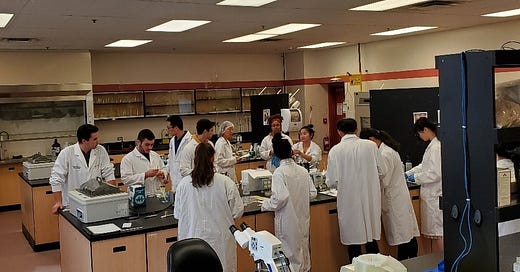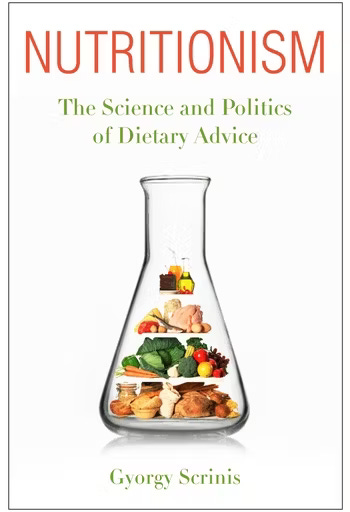Post 15: Challenges of breaking silos in Food Sciences/Food Studies
In recent decades, food-related issues have garnered increasing public attention worldwide. While ongoing social problems such as hunger and poverty retain their importance (though with a shifting focus from food supply to access), the emergence of diet-related health and environmental issues further underscores the food system's impact on human and ecological health.
These developments parallel an increased scholarly interest in food within the social and environmental sciences and the humanities, extending beyond the traditional food-related areas of agriculture and nutrition. The extent of this interest is evidenced by the growing number of food-related presentations at mainstream academic conferences, articles in diverse scholarly periodicals and anthologies, associations and societies focusing on the study of food, conferences devoted to food or food-related streams within traditionally non-food disciplines, new academic journals, culinary history societies, new books and book series, serious analyses of the food system, and food-related websites. Additionally, there has been a notable increase in food-related university courses, food studies concentrations, and degrees, which are established separately or within conventional disciplines.
Informed by critical insights from social sciences and humanities perspectives, food studies has emerged as an interdisciplinary approach to examine the historically specific web of social relations, processes, structures, and institutional arrangements that encompass human interaction with nature and other humans involving the production, distribution, preparation, and consumption of food. In the coming weeks, I will focus on the contributions of social science and humanities perspectives to food studies. In this writing, I aim to highlight the contributions of nutritional and natural sciences and engineering to studying food.
Numerous past and present studies have focused on understanding the relationship between food, diet, and health. The ancient civilizations of China, Egypt, Greece, India, Mesopotamia, Persia, and Rome recognized a connection between food and health. However, until the 18th century, scientific investigations were sparse. Ned Stafford summarizes in Nature some early discoveries in nutrition, beginning with Lavoisier’s experiment with a calorimeter in 1780 and extending it to research on key nutrients, vitamins, and micronutrients. These developments established a foundation for nutritional science and dietetics.
Elizabeth Neswald, a science historian at Brock University in Ontario, Canada, highlighted that much of the nutrition research during this period centred not on individual health but on identifying the cheapest, easiest methods to feed “institutionalized and impoverished populations” to prevent food riots. “It was a basis for determining what someone needs to survive; what leads to weight gain, what leads to weight loss, what enables physical labour and what the relationship between food and physical labour is”. Neswald’s observation suggests that early interest in human nutrition and food science is linked to concerns about the capitalist accumulation process and political stability.
Feeding workers cheaply is essential for lowering the cost of reproduction of labour, which translates to lower wages and higher profits in a capitalist economy. Assembly line technology, for example, was initially introduced in Chicago stockyards to enhance labour efficiency and reduce meat costs. New migrants to the US would write back home that they could eat meat whenever they wanted. They would remember the old saying, “If a peasant eats meat, either the animal is very sick, or the peasant.” Later, Henry Ford adopted assembly line technology to manufacture cars and revolutionize the food processing industry. Food processors extended Fordist mass production for mass consumption by filling our supermarket shelves with rich varieties of pseudo “choice.” Fast food chains adopted it to increase the delivery of fast meals at affordable prices with cheap, non-unionized labour. George Ritzer coined the term McDonaldization. Access to food has been a great equalizer and political stabilizer.
Another factor that significantly contributed to nutritional discoveries was war. Millions of soldiers fighting on battlefields needed to be fed and kept satisfied. Food was as crucial as propaganda. Margarine was developed to meet the demand for a butter substitute that would not go rancid, which was essential for the French troops fighting in various wars during the 19th century. Canned and dehydrated foods, Spam, condensed milk, frozen juice concentrates, instant coffee, chocolate bars, and cigarettes were among other wartime food innovations later marketed to civilians.
A third factor was the Industrial Revolution and the rise of the food processing industry. Selling processed foods required reducing production costs, extending shelf life, and maintaining consumer interest in items that could be identified as stale, considering the time between their production and consumption. This necessitated processing raw ingredients, separating them into their basic components, and then reassembling them into new products. Flour was no longer ground from whole grains; wheat was separated into bran, starch, gluten, and wheat germ, fortified with vitamins lost during bleaching and processing, and reconstituted as bread flour or cake flour, a highly processed industrial product. Additives were needed to prevent mould and keep the product hydrated.
Some food-based products have various industrial applications beyond the food processing sector. For instance, cornstarch is used as laundry starch, in adhesives, paints, paper products, as an anti-sticking agent, in textile manufacturing, and the pharmaceutical industry.
Disciplinary specialization enables researchers to focus on unique questions and develop specific methodologies. Both natural sciences and engineering emphasize problem-solving, critical thinking, and reasoning, aiming to understand complex systems through systematic and logical investigation. Disciplinary specialization and knowledge also provide legitimacy in providing expert opinion in shaping public discourses and policies.
Researchers and professionals with backgrounds in nutritional sceinces and dietetics, natural sciences, engineering, business management and marketing, in agriculture related fields such as soil science, animal science, crop science, horticulture, agricultural engineering, agricultural economics, and aquaculture continue to play a significant role in shaping and directing public perceptions of how the food system needs to work through their research, everyday practices and through their contributions to public policy.
Throughout the 19th and 20th centuries, food-related research has been part of the natural sciences. It is no wonder that a vast amount of literature addresses food sciences, agricultural engineering, biochemistry, nutrition, and dietetics. Advances in nutritional sciences have allowed us to understand the relationship between health and diet. Thanks to some of these discoveries, mysterious diseases such as beriberi, scurvy, rickets, and pellagra, which made life miserable for millions of people, could be recognized as vitamin deficiencies.
Years ago, my wife visited her aging father, who was nearly paralyzed due to neuropathy and had been advised to undergo surgery on his spine. Having experienced a similar situation with my father, who forgot to take his B12 shots after his stomach was removed because of cancer and suffered neuropathy as a result, I asked her what medications her father was using. This time, it was B6 that had been depleted by the medication he was taking. His problem was resolved with vitamin B6 and physiotherapy.
However, as Gyorgy Scrinis, a professor of Food Politics and Policy in the School of Agriculture, Food and Ecosystem Sciences at the University of Melbourne, warned, nutritional reductionism—the attempt to understand foods and diets in terms of their nutrient and biochemical composition—also poses a danger.
Scrinis argues that nutritionism has become the dominant paradigm within nutrition science, shaping much professional and government-endorsed dietary advice. However, over the past couple of decades, nutritionism has been co-opted by the food industry, becoming a powerful marketing tool for their products. Simultaneously, nutritionism has shifted from the margins to the center of the public’s understanding of food and health. This shift has increased the susceptibility of nutrition-conscious individuals to the marketing strategies the food industry employs.
Years ago, I attended a reception at Jennifer Clapp’s home in Waterloo, Ontario. While chatting with a colleague at the event, I criticized a margarine brand that contains added statins and claims to lower cholesterol. To make a long story short, I realized that my companion that evening was Gyorgy Scrinis when I saw his name tag at the conference the next morning. Interestingly, Gyorgy’s grandparents were from a town near Ephesus, about an hour’s drive from where I grew up in Izmir. His family left home after the population exchange between Greece and Turkey in 1924. Years later, we found ourselves in different parts of the world, united by our shared passion and politics. Later, we co-authored an article in Turkish in a book on functional foods.
Silos of knowledge:
When I review a list of “high-impact” journals in food studies, I come across an unfamiliar collection. Among the 20 AI-generated journal listings, I recognized only Food Policy, which I am familiar with. This may reflect my own biases, but I fear that most of us from social science and humanities backgrounds seldom read the highly specialized food science journals, and the opposite may also be true for food scientists. These silos are hard to overcome. As we develop unique analytical and methodological approaches and differ in political and ideological stances, we find ourselves farther apart in identifying problems or seeking solutions. However, the global challenges we face, including food insecurity, ecological issues, threats of climate change, and wars, require our collective energy.
Siloed thinking is also a problem in our classrooms. I often wonder how some of my students majoring in marketing or engineering would handle the critical insights I offer about the food system problems. Many of them understand what I am discussing as citizens. Yet they also know that their future employment may require them to work for the corporations and government agencies that are being criticized. I am afraid they learn to keep silent in the classroom and later at work, a skill for individual survival, and a curse for the future of democracy.
Here's a list of 20 highly impactful journals in food studies, based on impact factors and other metrics, as generated by Google AI on May 9, 2025. I will provide a list of my food studies journals in the coming weeks for you to compare. I have not checked the validity of this list below. I am only familiar with Food Policy (#13, below).
Trends in Food Science & Technology
Food Chemistry
Critical Reviews in Food Science and Nutrition
Food Hydrocolloids
Comprehensive Reviews in Food Science and Food Safety
Journal of Agricultural and Food Chemistry
Food and Chemical Toxicology
Food Research International
International Journal of Food Microbiology
Molecular Nutrition & Food Research
Journal of Food Science
LWT-Food Science and Technology
Food Policy
Food Microbiology
Food Quality and Preference
Innovative Food Science & Emerging Technologies
Journal of the Science of Food and Agriculture
Food and Bioprocess Technology
Journal of Food Engineering
Journal of Food Processing & Technology







